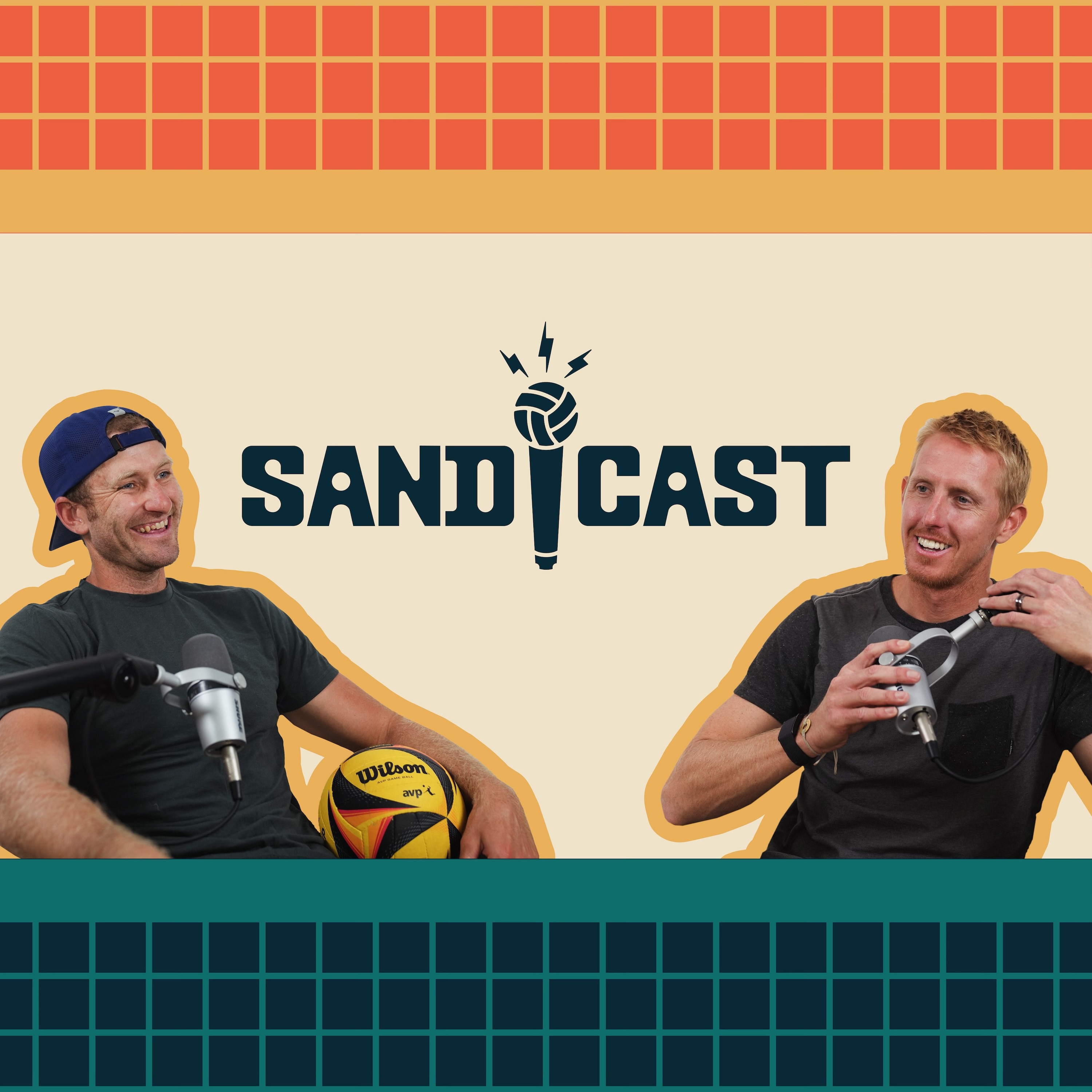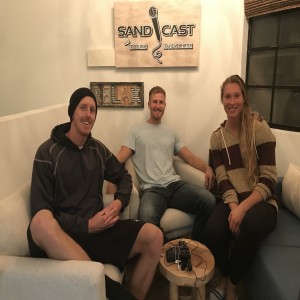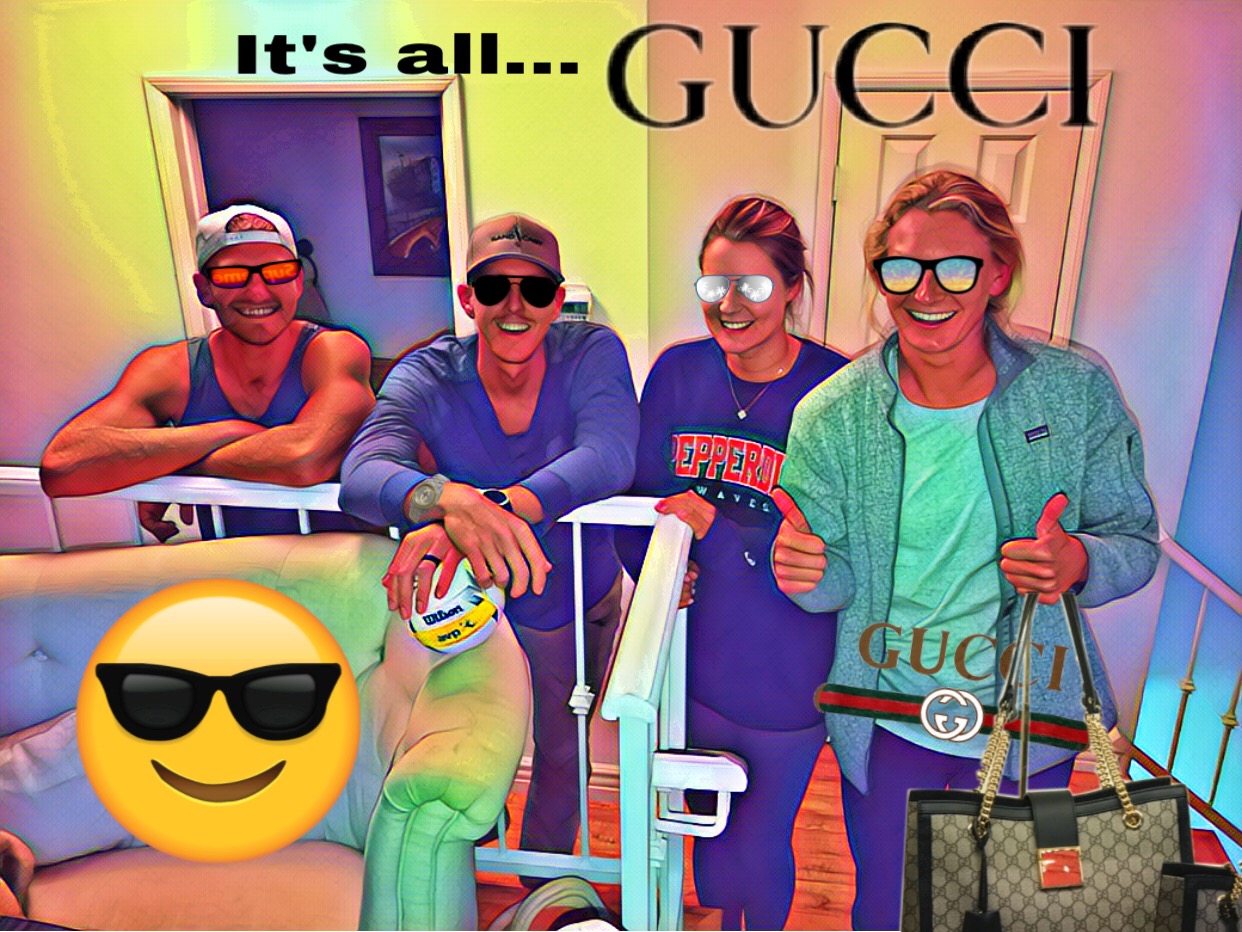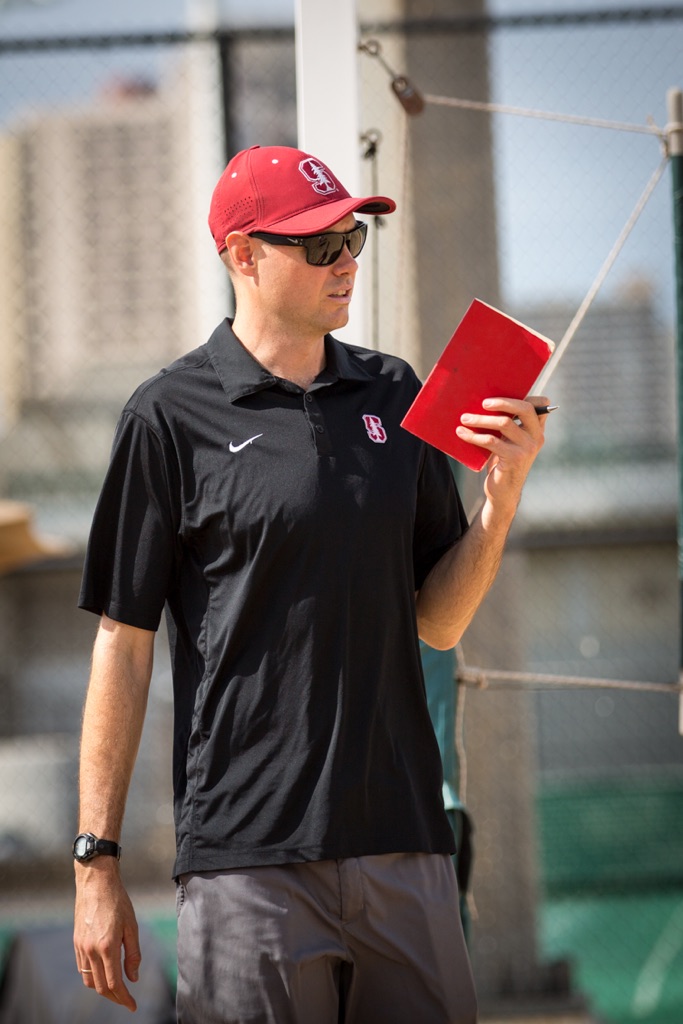

1.1M
Downloads
440
Episodes
SANDCAST is the first and leading beach volleyball podcast in the world. Hosts Tri Bourne and Travis Mewhirter take listeners into the world of the AVP, Volleyball World Beach Pro Tour and any other professional beach volleyball outlets, digging deep into the lives of the players both on and off the court as well as all of the top influencers in the game.
Episodes

Wednesday Jan 16, 2019
Carly Wopat: Transitioning from indoor's highest level to beach's
Wednesday Jan 16, 2019
Wednesday Jan 16, 2019
Carly Wopat acknowledges that there are a number of skills that need to be refined, so be smoothed over, to be fully beached from their indoor counterparts. But she’s been an athlete all her life, a state champ in high school, an All-American at Stanford, a professional overseas. It’s simply a matter of time for most, and anyway, the majority of the fundamental skills are already there. There’s just one that gives her pause: setting, and hand setting.
“Initially I just wasn’t squaring up,” she said on SANDCAST: Beach Volleyball with Tri Bourne and Travis Mewhirter. “It took a long time for me to just square up every time. I kept trying to angle the sets. I’m starting to get good at squaring up but I want to get better at hand setting and that’s the most difficult thing for me right now: hand setting.
“The indoor hands are so different from the beach hands. I’ve gotten to the point where I know how to set a good ball, what it feels like, I just need to be able to do it consistently.”
Anyone who might doubt Wopat’s ability to do so likely just doesn’t know much about Carly Wopat.
This is a 26-year-old who, as a senior in high school, led Dos Pueblos to a CIF title and followed it up by setting a school record in the discus.
This is a girl who, while majoring in human biology and dabbling with a minor in art at the most prestigious university in the country, led the Pac-12 in blocks per set (1.43) and hit .392 for her career, good for second all-time at Stanford.
This is a girl who taught herself to play guitar, who speaks French and can also drop the occasional Turkish – “I don’t know why, but it just stuck with me,” she said – and Japanese. This is the daughter of a man who nearly qualified for the 1980 Olympics in track and field and a mother who competed as a gymnast in college.
And hand setting could potentially be an issue? No way.
In fact, it is the very difficulty of the sport, the fact that one couldn’t simply be a decent athlete and succeed, that drew her to volleyball in the first place. It is the need for these reps, the proverbial 10,000 hours, that she loves the most.
“I like the speed of it,” she said of volleyball. “It’s an interesting sport. It takes a lot of skill. There are some sports where you can be really athletic and just go out and be really good at, like you can run and go be a track athlete or something like that. But with volleyball, there’s so much skill involved that it takes years and years to cultivate just hand-eye coordination and the feel for the ball. Just things that only come with experience I guess, perspective of the court and so I really liked that part of the game, that I could work on these skills and be really athletic and go out and play this game.”
And in limited experience on the beach, she has already excelled, making two main draws – in San Jose and Huntington Beach – to end the 2018 season, taking fifth at p1440 Huntington Beach alongside Corinne Quiggle. With those resume points, despite zero FIVB points to her name but the desire to play overseas, she got a call from one of the most experienced United States defenders, Brittany Hochevar.
“Hochevar messaged me while I was still playing in the p1440s and asked if I wanted to meet up,” Wopat recalled. “I think she had done her research and watched me a little bit and maybe talked to some people, so we met up and discussed playing together, and she just kinda has this dream to go to the Olympics for 2020 and we talked a lot about timing, and our partnership – I don’t know, just the timing of it all just works out really well.
“The more I’ve gotten to know her spirit and energy – she’s just an amazing person. I just think we’re going to make an amazing partnership.”

Wednesday Apr 25, 2018
For Kelly Reeves and Brittany Howard, it's all gucci vibes
Wednesday Apr 25, 2018
Wednesday Apr 25, 2018
It would seem that Kelly Reeves and Brittany Howard have been playing together for years. At the very least, it would seem as if they’ve been close for quite some time. They smile constantly. Laugh even more.
On more than one occasion on SANDCAST: Beach Volleyball with Tri Bourne and Travis Mewhirter, one finished the other’s sentence or filled in a blank.
Little about their natural chemistry, which is evident both on a volleyball court and in a podcast studio, suggests that the two have only recently begun a partnership and, by extension, deepening a friendship.
And yet here they are, exactly two tournaments in, complete with two bronze medals in a pair of NORCECA events, in Aguascalientes and La Paz, respectively, with a main draw just one week away for FIVB Huntington Beach.
For Reeves, this is no longer a novel concept, to pick up with a new partner and enjoy immediate success. She’s done this at every level of her career. Doesn’t matter if it was at Cathedral Catholic High School, where she won four straight CIF titles and graduated as the all-time kills and digs leader in San Diego County.
“I think that’s been passed,” she said, laughing.
She one-upped herself at UCLA, winning a national championship indoors in 2011 –- technically, she was also a member of the 1991 national championship winning team, rooting on the Bruins from the womb as her mother, Jeanne, was an assistant coach -- before hitting the beach and becoming the first UCLA All-American on the sand.
The AVP was no different, either. Reeves’ career began in 2016, in Huntington Beach, and a fifth-place finish with Ali McColloch assured her that she wouldn’t have to grind through an AVP qualifier again. She was named rookie of the year, and a year later, partnered with Jen Fopma, she reached the semifinals twice.
Two events into the 2018 season, she’s matched that total, with a partner who is a bit stunned herself by the pair’s quick success.
“A year ago, if you would have told me this is where I would be, that I’d be partnered with Kelly Reeves, playing in a NORCECA, I would definitely not believe you,” Howard said. “It’s just been really cool and awesome experience.”
A year ago, Howard had no plans to play AVP at all. After graduating from Stanford with a degree in Science, Technology and Society, Howard had a job offer in El Segundo. She planned to take it, maybe play in a few CBVAs. Nothing more, save for maybe the occasional local AVP tournament.
But Corinne Quiggle, her partner at Pepperdine, where Howard competed for a fifth year as a grad student, asked if Howard might want to play a few, beginning with New York in early June. They had just come off a third place finish at the USAV Collegiate Beach Championships, pushing USC’s indomitable duo of Sara Hughes and Kelly Claes to three sets.
Why not?
So off to New York they went –- and lost in the first round of the qualifier. Then to Seattle with the same result. San Francisco saw a second-round exit before a breakthrough in Hermosa and Manhattan Beach, where they coasted through both qualifiers in straight sets.
By season’s end, Howard, who had no plans to play on the AVP Tour, was a three-time main-draw player, a stunningly fast learning curve from a girl who readily admits she had a “rough start” to the beach at Pepperdine.
The rough start is firmly in the rearview, as Howard, technically still a rookie, is now partnered with one of the most athletic defenders on Tour, taking thirds in NORCECAs, enjoying champagne showers before the season has really even begun.
“We definitely celebrated on the podium for sure,” Reeves said, laughing. “That was my first time doing the champagne and I just sent it. Full send … It was our last pair of nice clothes and we were just drenched in champagne.”
A good problem to have.
Or, rather, as the ever-affable Reeves is prone to saying: A “Gucci” problem to have.


Wednesday Apr 04, 2018
Stanford beach volleyball continues to strive for more, with Andrew Fuller
Wednesday Apr 04, 2018
Wednesday Apr 04, 2018
Stanford beach volleyball is, in one aspect at least, no different than any other athletic team in that every member has their role. Like, say, the player whose job it is to remind everyone of their inevitable mortality, and that all things should be taken in perspective.
Or the one who brings in studies on the positive impact of placebo effects.
Or the researcher who is studying the physiological effects of forgiveness.
Or the yoga instructor. Or the Olympic assistant coach.
Or the sports psychologist, who “does sessions with the team that are very different,” coach Andrew Fuller said on SANDCAST: Beach Volleyball with Tri Bourne and Travis Mewhirter. “We’re inserting different voices and perspectives and voices into their world, because you never know what’s going to stick… People at the national level don’t have this type of support.”
Welcome to Stanford, the most academically rigorous and, almost paradoxically so, one of the most athletically competitive universities in the country, with the resources and exceptional minds to prove it.
“One of the things that really excites me about being at Stanford is not only the abundance of resources but the level of access to the resources and I would be remiss if I was not taking advantage of people who aren’t just easily accessible but are super stoked on what’s happening in athletics and want to help out,” Fuller said. “I think there’s a particular irreverence to Stanford that I enjoy.”
That unique level of expectations, that irreverence, is as much an advantage as it is a challenge. Some schools, like LSU, for example, are limited geographically. Stanford’s excellence, and its demands to continue to be excellent, are, ironically, its biggest hurdle.
This year, 47,450 students applied to Stanford. Only 2,040 were admitted – 4.2 percent, the lowest acceptance rate in the country, ever.
“It’s very self-selecting, and we can have some conversations that are very brief,” Fuller said. “We can have a conversation with a young student-athlete who, athletically, is wonderful, and is perhaps a very good cultural fit for us. And then we see the transcript and the conversation just stops. Stanford’s a choice, and some students don’t want to do the work that is required to get there. It’s my belief that for some students, Stanford is worth the work. And is it going to be easy? Not at all. It’s going to be difficult. And people who are up to that challenge and go through it thrive at Stanford.”
Indeed. One in particular, a name volleyball fans are likely to become familiar with in the years to come, is Kathryn Plummer, Stanford’s 6-foot-6 sophomore who already owns a lengthy list of accolades – Pac-12 Freshman of the Year on the beach, the ESPN W Player of the Year indoors among them.
“She’s doing things from a technical standpoint we haven’t really seen in players her size, ever,” Fuller said. “If any listeners get to watch her, KP is hand setting every ball that she can. If she can get her hands on it, she will. I’m trying to remember the last player her size who has ever hand set. I would love it if someone could name someone who’s 6-foot-6 who’s saucing. She’s kind of breaking the history of someone what it means to be a tall player… The approach she’s taking and the chance she’s taking and the risk – those are the things I’m stoked about, the way she’s approaching the future of her game.”
Plummer is exceptional, yes. But her mind, her approach, is also befitting the Stanford culture – the top one percent of the one percent.
“I’ve learned that if I don’t have a damn good reason for doing something, they’re going to find the holes in it and just blow me up,” Fuller said, laughing. “That’s the greatest gift. Whether that’s some game or drill that I come up with, they’ll immediately pounce on the loophole of it and sometimes I’m like ‘You guys are right.’ They just crush me all the time. What’s that old adage? Surround yourself with people who are better than you? At any point, I am the dumbest person in the room.”
The dumbest person with a bachelor’s degree from Virginia Tech and an MFA from the Academy of Art in San Francisco, who also happened to have a fair volleyball career of his own.
Not a bad option to have for a head coach.